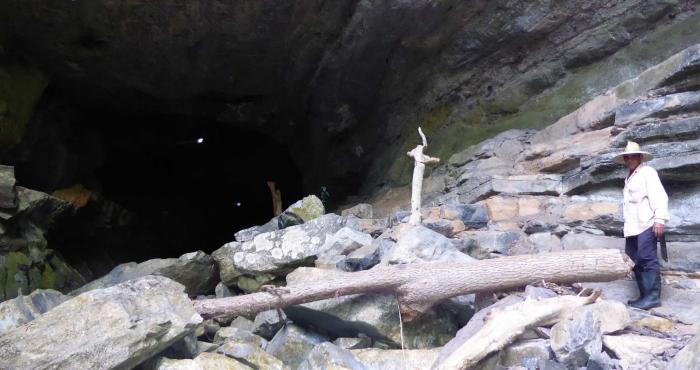
Cuban scientists are working on preserving the fossil of a giant saurian found a few months ago in a cave in the Viñales Valley, one of the most important discoveries in the country's Paleontology.
The doctor in Geological Sciences Manuel Iturralde Vinent told the Granma newspaper that the 3D photogrammetry of the site where the petrified skeleton of an ichthyosaur (a marine reptile with some resemblance to the dolphin, but with a longer beak and sharp teeth) is found. about four meters long.
The total mapping of the cavern, known as the source of the bull river, was also carried out, he added.
The rock that contains this fossil is a limestone with a structure like superimposed sheets, which with humidity and temperature changes has been detached, the expert explained.
This allowed the skeleton, which was originally inside the rock, to be exposed, but given the continuity of this same process there is fear that the remains of the ichthyosaur will begin to fall off and be lost.
As an initial step, Iturralde highlighted the photogrammetry work, as it is the first time it has been carried out on a fossil remains in Cuba, which constitutes a great step forward for national science, he noted.
Esteban Rubén Grau, vice president of the Speleological Society of Cuba, argues that it is a very novel technique and one of the most used today to obtain high-resolution three-dimensional images of spaces such as caves, tombs, buildings, landscapes and objects of special interest.
In the case of the Viñales ichthyosaur, thanks to photogrammetry, a digital reproduction of the location of the discovery was achieved, which allows studies of each bone and the skeleton as a whole, without having to enter the dangerous cavern.
Experts determined that the petrified skeleton, found in late 2023, is an ichthyosaur, possibly of the Ophthalmosaur type, which lived in the early Caribbean Sea at the end of the Jurassic period, between 145 and 150 million years ago, an antiquity never found in another identifiable remains of this type of marine reptiles in Cuba.
This is the first skeleton of a large saurian in which numerous articulated bones were preserved, since much smaller skeletons had previously appeared, especially of fish, and of a pterosaur without the skull, as well as isolated bones.
Along with the investigations, we seek to stop the natural process that is occurring in the rock that contains the remains of the fossil, from which small fragments detach and that will eventually lead to the loss of the specimen. (Text and photo: PL)